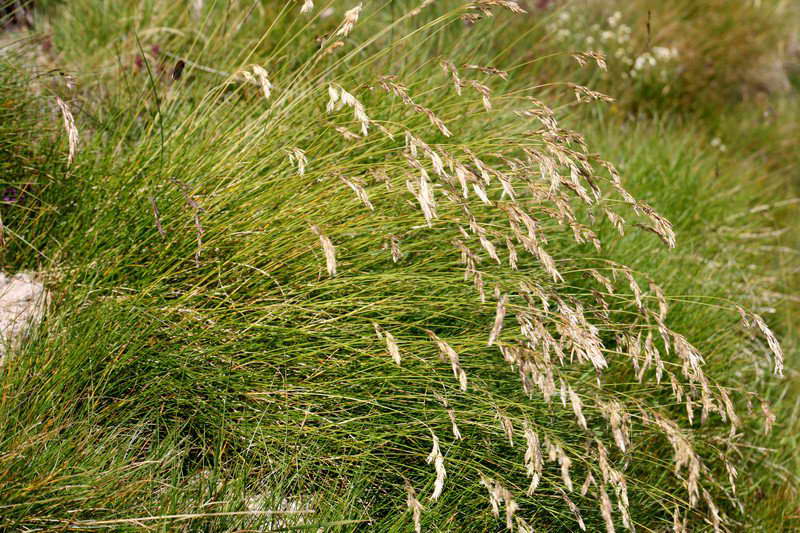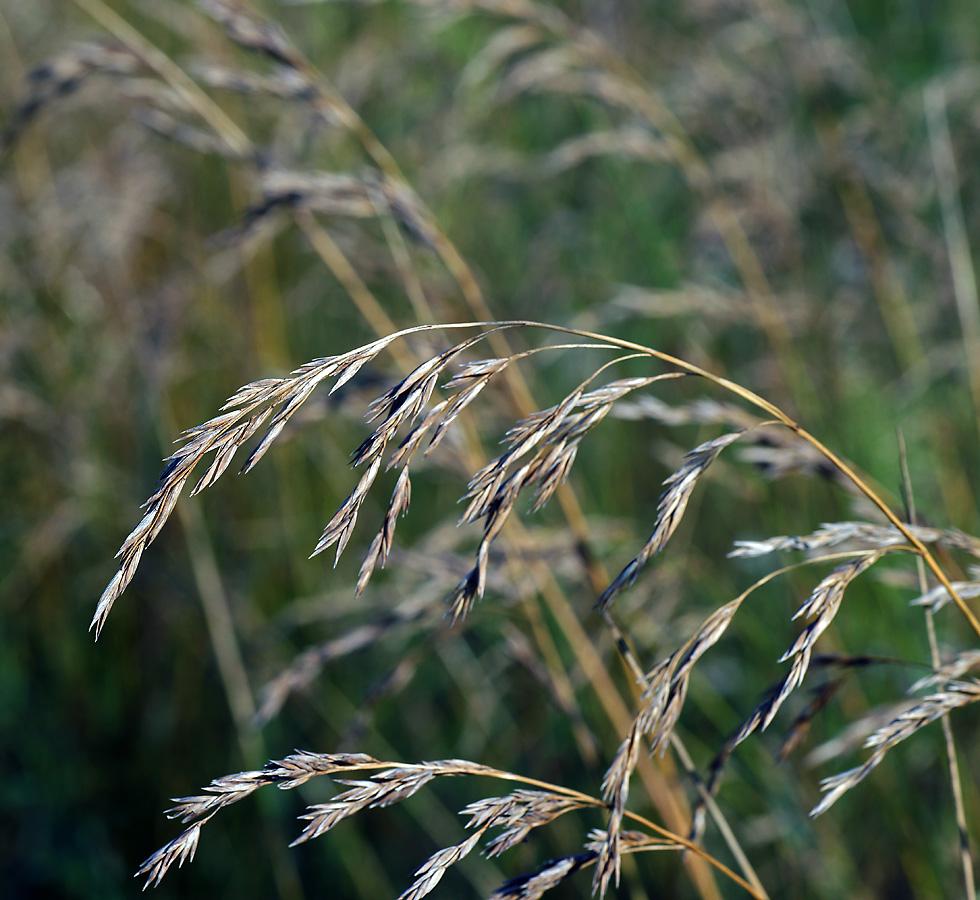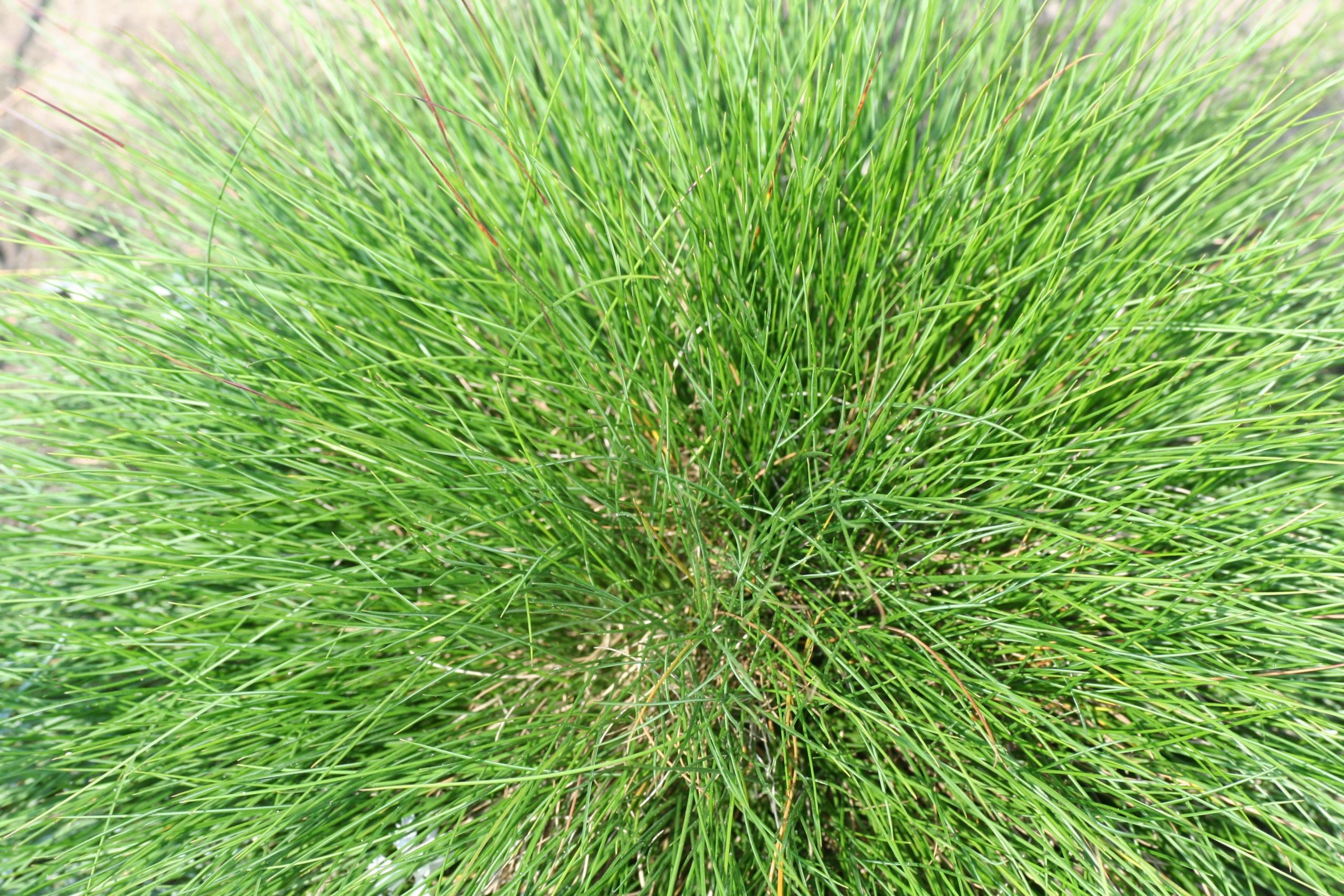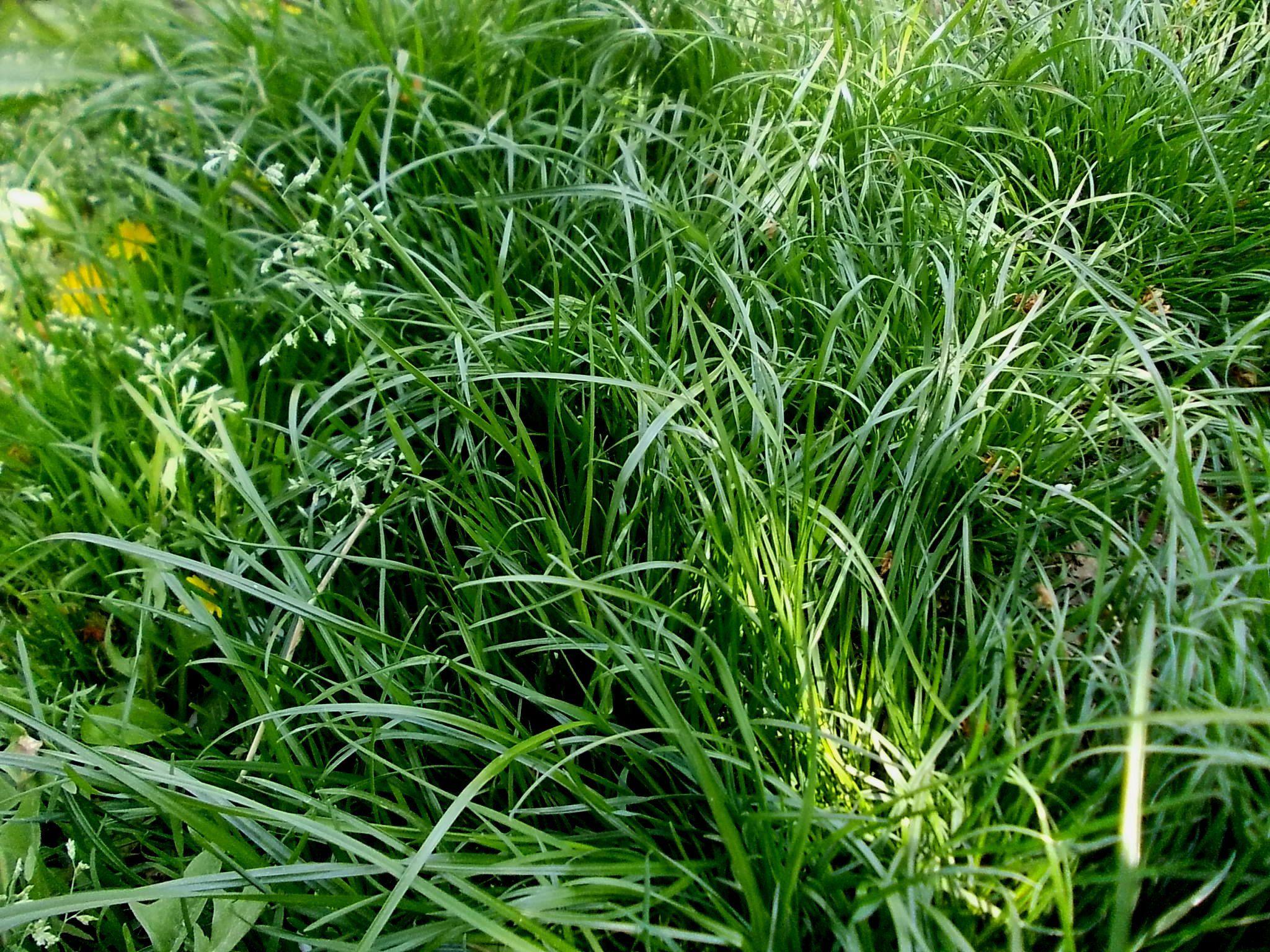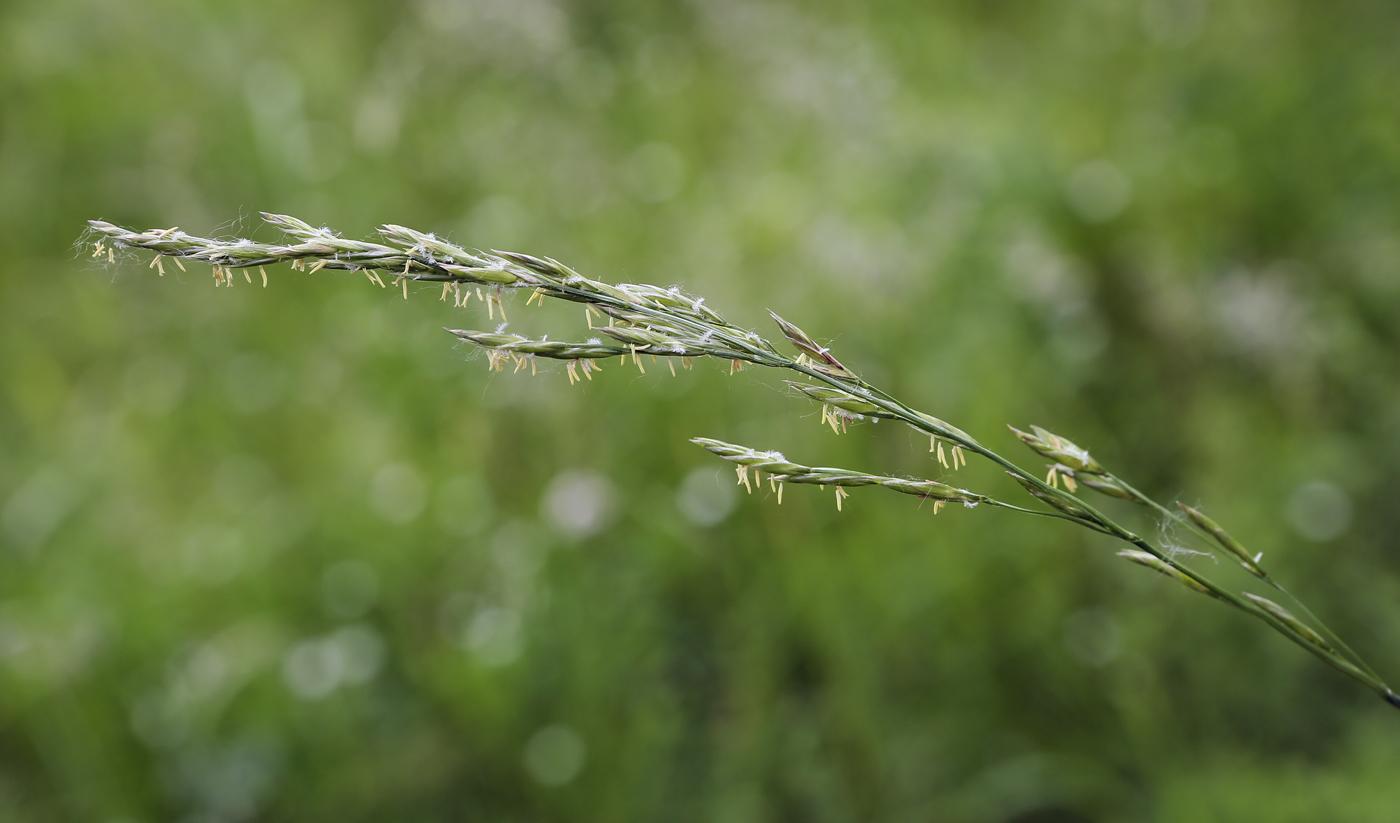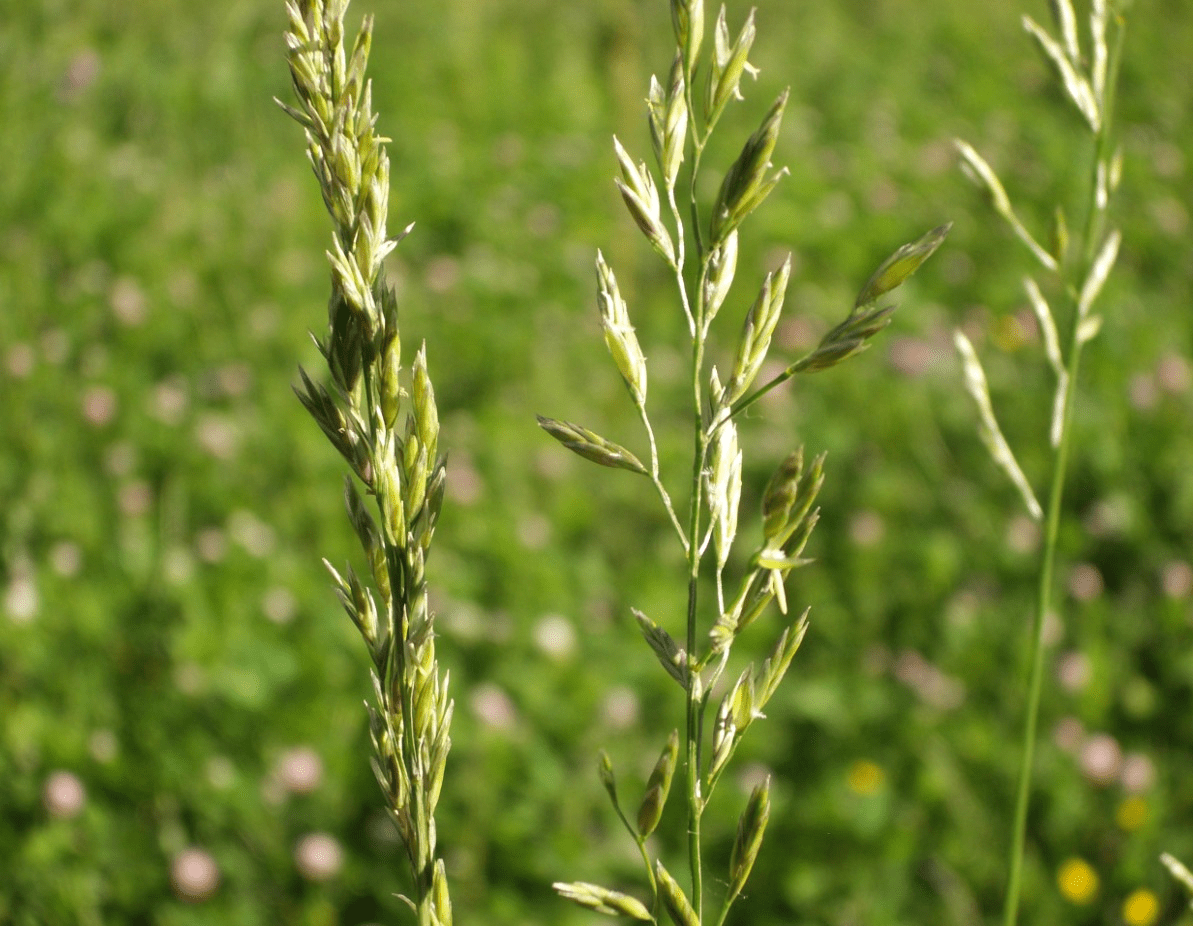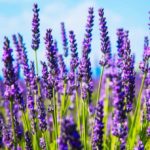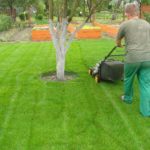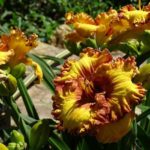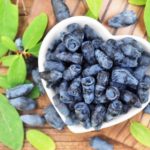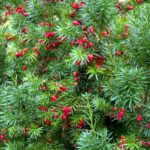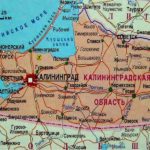Meadow fescue is a perennial herbaceous crop that belongs to the Poaceae family. This plant is used as animal feed and for lawn decoration. The grass grows quickly, is easy to care for and is resistant to external factors. Therefore, when using the plant as a lawn, it will remain attractive for decades.
Description of the plant
Visually, this herbaceous plant differs from other representatives of the Poaceae family.Therefore, it can be easily distinguished from other cultures.
Appearance
The plant is characterized by strong, weakly leafy, straight shoots and dense turf. Fescue has well-developed fibrous roots. Their individual shoots penetrate to a depth of 50 centimeters. In this case, the bulk of the roots are located in the upper layer of soil 20 centimeters from the surface. The culture has flat, narrow-linear leaves measuring 20-25 centimeters. Moreover, their width does not exceed 3-5 millimeters.
Fescue has a loose bush type of tillering. This means that the development of new shoots occurs below the soil surface. The top layer of soil contains short internodes. After reaching the surface, they form foliage and shoots. In this case, lateral stems appear near the base of the tillering zone. Thanks to this, the bush itself increases in size.
The seeds are large in size and green-gray in color. They reach 4-8 millimeters in length and 0.9-1.8 in width. Their thickness varies from 0.6 to 1.2 millimeters. During long-term growth, dead fragments of shoots, foliage and stems accumulate in the central part of the bush. In order for the turf to maintain its decorative properties, it needs to be combed out from time to time.
Growth area
Under natural conditions, meadow fescue grows in Asia Minor and Europe. The culture is found in the forest-steppe and the central part of the floodplain. The plant is grown in Central Asia and the Caucasus.It is also found in Siberia and the European territory of Russia.
The culture develops well in fertile soil, which contains a lot of organic fertilizers. It grows in open areas and in slightly shaded areas.
Flowering time
Flowering of the grass begins in the second year after planting. When grown in open areas, this occurs in mid-June, and in slightly shaded areas - at the end of the month. The grass blooms en masse in the morning - at 5-8 o'clock. This period lasts 6-8 days.
Application
Meadow fescue is primarily used as lawn grass and forage crop. There are also universal varieties that are suitable for both cases. The perennial has high feeding value. It represents the best crop that is suitable for pasture and hay mixtures.
As a lawn
This plant has tough and bushy shoots. Therefore, it is not used for country or park lawns. The culture is usually used for the following types of plantings:
- universal;
- building;
- sports;
- road.
In most cases, the crop is not used independently, but in combination with other lawn plants. Most often, meadow fescue is combined with ryegrass, white clover and bluegrass.
If you plan to use the lawn for outdoor activities, it is worth planting a mixture of herbs on it. In this case, the amount of fescue should be small.
In landscape design
In most cases, it is the lawns that are decorated with fescue. Sometimes this grass is combined with other crops and used for borders and zoning of garden plots. Perennial grass is not very resistant to trampling, so it should be planted in places where no one walks.
Popular varieties
Breeders have managed to develop a large number of varieties of this plant. The most popular include the following:
- Baraika is a Dutch variety that is grown in the central region. It was included in the State Register in 2015. In the first season, the crop is semi-erect bushes 70-80 centimeters high. This plant blooms in the second decade of June. From 1 hectare it is possible to collect 27.2 centners of grass.
- Barvital - this variety of Dutch selection was included in the State Register in 2017 and is a mid-early species. This plant forms semi-creeping bushes 70-80 centimeters high. From 1 hectare it is possible to collect 34.1 centners of grass.
- Vera - this Russian variety is recommended to be grown in Western Siberia. It was included in the State Register in 2015. The bushes are semi-erect intermediate. They reach 80-90 centimeters in height. The plant has green leaves of medium width. The dry matter of greens contains a lot of protein.
- Dedinovskaya 8 - this plant is actively grown in the central regions and in the north-west. The crop is characterized by high resistance to drought and frost. It was included in the State Register back in 1966.
- Penza 1 is a winter variety of crop that forms a loose, erect bush. This variety is characterized by strong branching. At the same time, its shoots grow on average up to 60 centimeters. The culture belongs to the early varieties. In this case, the first mowing can be carried out 30-35 days after the start of spring growth. Fescue of this variety should be grown in the central regions and in the north.
Advantages and disadvantages
Meadow fescue contains many valuable components, which makes it possible to make high-quality feed from it.It contains a lot of fiber and protein. An important advantage of the crop is its rapid recovery after mowing.
Other benefits of the plant include the following:
- Active growth in the first year after planting. Therefore, the crop evenly covers the area, forming a dense lawn.
- Frost resistance. It is important to take into account that the plant can hardly tolerate temperature fluctuations.
- High resistance to drought. The perennial grows well in lighted areas. At the same time, it easily tolerates long-term lack of watering.
- Fast germination. The first shoots appear after a few days. It takes 3-4 weeks to form a full coating.
- High decorative properties. A meadow fescue lawn does not lose its visual characteristics throughout the entire growth period - more than 15 years.
- Resistance to short-term flooding by melt water. It is important to take into account that fescue may die under the ice crust.
- Unpretentiousness to the composition of the soil. The culture develops well even in poor soil.
At the same time, culture also has a number of disadvantages. The main disadvantages include the following:
- poor tolerance to trampling;
- the need for several haircuts during the season;
- the need for timely mowing - otherwise, bumps and bald spots will appear on the surface.
Landing
The crop grows well in loamy soil, which has neutral acidity parameters. Before planting, it is recommended to clear the area of plant debris and stones. In case of heavy weed contamination, it is worth treating the beds with herbicides a month before planting.
After the waiting period is completed, the area should be dug up to a depth of 30 centimeters. Then use a special roller to level the soil surface. This will help eliminate voids and unevenness.
If necessary, it is recommended to normalize the pH parameters. In this case, lime should be added to acidic soil, and peat chips should be added to alkaline soil. The soil should also be fed. To do this, it is worth using compost, vermicompost, and rotted manure.
If the soil is poor or depleted, it is worth replacing its top layer with fertile substrate. It is also permissible to use special soil for lawns. It must contain sand, peat and mineral ingredients.
After planting, it is important to keep the bed moist for 2-3 weeks. When planting in early spring, the area does not need to be watered additionally, since the soil is already sufficiently filled with moisture. When moistening plantings, it is important to avoid overwatering and the formation of a crust on the surface.
When is the best time to sow
It is recommended to carry out planting work in early spring. This should be done in early or mid-April. However, it is important that the soil warms up to a depth of 5 centimeters and becomes sufficiently loose.
When will the fescue come up?
It takes 10 days for seedlings to appear. At the same time, friendly shoots emerge after 2 weeks. It is important to take into account that with sharp temperature fluctuations, which are possible in spring, this period may increase by several days.
Care
Meadow fescue is considered an undemanding crop. Therefore, caring for grass is quite easy. At the beginning of spring, you should definitely inspect your lawn. If there are uneven areas filled with melt water, it is recommended to remove them.
It is recommended to water fescue as needed. It is important to avoid waterlogging and stagnation of moisture. This causes the plants to rot.
It is recommended to apply the first fertilizer in April. In this case, you can use a combined mineral preparation for the lawn. It should include potassium and phosphorus, but the main component is nitrogen. This substance ensures active growth of greenery.
Subsequently, fertilizing can be applied 1-2 more times during the season. Finally, the nitrogen dosage must be reduced. In this case, emphasis should be placed on potassium and phosphorus.
In May, it is recommended to verticulate the lawn. For the first time, this procedure must be performed 3 years after planting. At the same time, you need to get rid of dry and rotten leaves. Subsequently, the lawn must be mowed.
Verticulation is also recommended to be performed at the end of summer and autumn. The last time the procedure should be carried out is at the stage of preparation for winter. This affects the decorative properties and health of the crop next spring.
The lawn needs to be mowed several times throughout the season. After the May treatment, pruning should be repeated in June. In this case, it is necessary to align the boundaries of the coverage.
Meadow fescue is a sought-after ornamental plant that is often used to decorate lawns. It is also used as animal feed. In order for the plant to develop normally, it is important to carry out planting work correctly and provide it with quality care.

